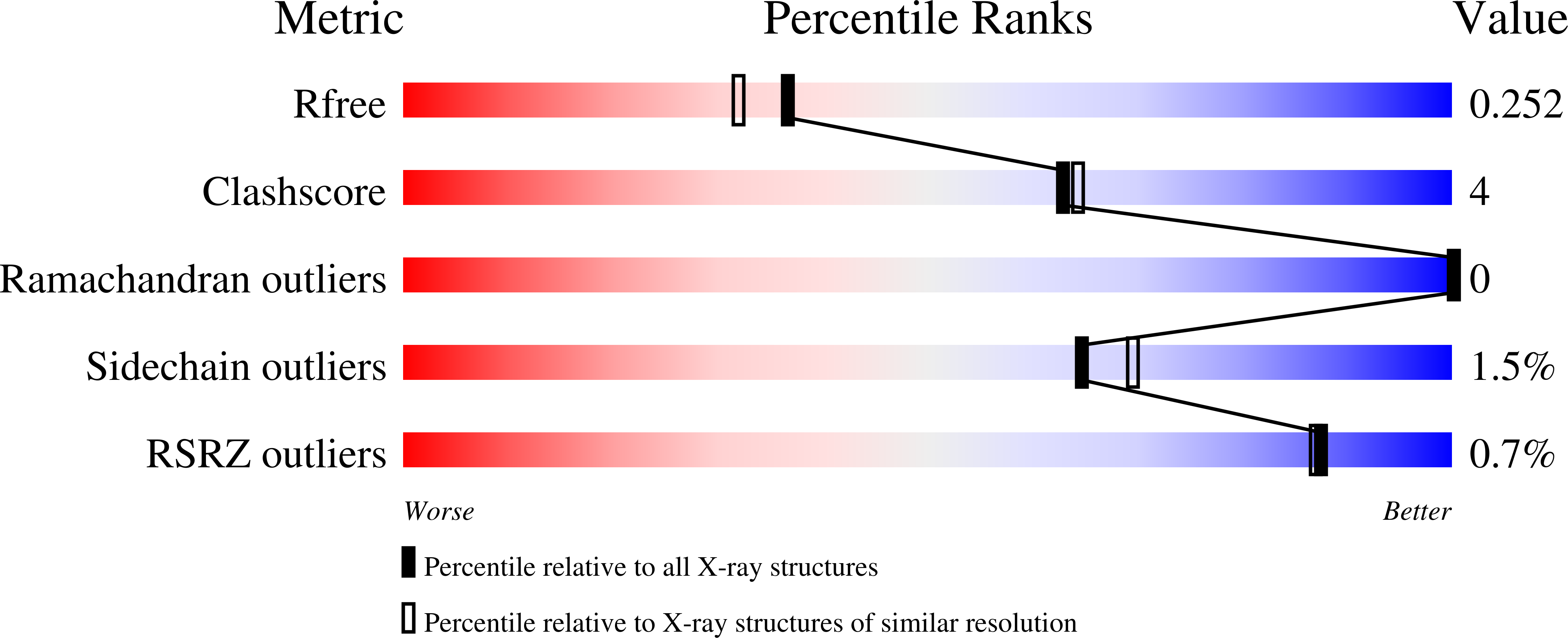The Sak polo-box comprises a structural domain sufficient for mitotic subcellular localization.
Leung, G.C., Hudson, J.W., Kozarova, A., Davidson, A., Dennis, J.W., Sicheri, F.(2002) Nat Struct Biol 9: 719-724
- PubMed: 12352953
- DOI: https://doi.org/10.1038/nsb848
- Primary Citation of Related Structures:
1MBY - PubMed Abstract:
The small family of polo-like kinases (Plks) includes Cdc5 from Saccharomyces cerevisiae, Plo1 from Schizosaccharomyces pombe, Polo from Drosophila melanogaster and the four mammalian genes Plk1, Prk/Fnk, Snk and Sak. These kinases control cell cycle progression through the regulation of centrosome maturation and separation, mitotic entry, metaphase to anaphase transition, mitotic exit and cytokinesis. Plks are characterized by an N-terminal Ser/Thr protein kinase domain and the presence of one or two C-terminal regions of similarity, termed the polo box motifs. These motifs have been demonstrated for Cdc5 and Plk1 to be required for mitotic progression and for subcellular localization to mitotic structures. Here we report the 2.0 A crystal structure of a novel domain composed of the polo box motif of murine Sak. The structure consists of a dimeric fold with a deep interfacial cleft and pocket, suggestive of a ligand-binding site. We show that this domain forms homodimers both in vitro and in vivo, and localizes to centrosomes and the cleavage furrow during cytokinesis. The requirement of the polo domain for Plk family function and the unique physical properties of the domain identify it as an attractive target for inhibitor design.
Organizational Affiliation:
Program in Molecular Biology and Cancer, Samuel Lunenfeld Research Institute, Mount Sinai Hospital, 600 University Avenue, Toronto, Ontario M5G 1X5, Canada.














